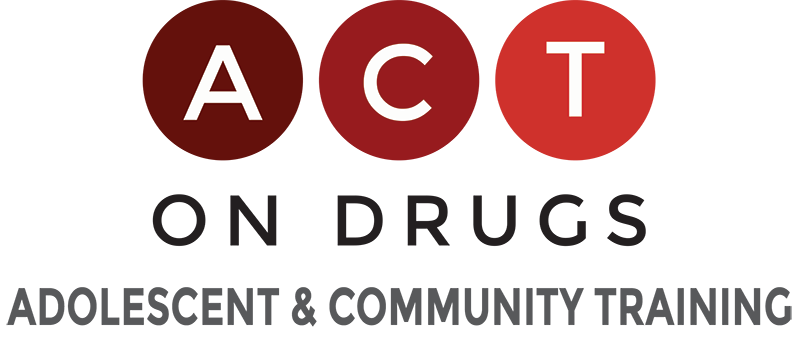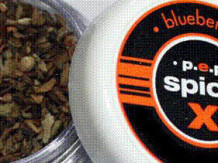Synthetic Cannabinoids: Spice, K2 and similar marijuana-like substances
Synthetic cannabinoids are chemicals that are similar to delta-9 tetrahydrocannabinol (THC), the primary cannabinoid in marijuana. Like the THC in marijuana, synthetic cannabinoids bind to receptors in the brain, which is part of the human endocannabinoid system. Normal brain function and maturation are partially modulated by the endocannabinoid system. This system controls pain-sensation, mood, and memory. Natural and synthetic cannabinoids interrupt the endocannabinoid system, impair brain function, and brain growth. More than 200 synthetic cannabinoids have been identified but only a few have been declared a controlled substance in the United States.
The final product sold in stores and online is produced by adding raw synthetic cannabinoids to various types of dried plant material.These products may be marketed as “herbal incense” or “potpourri” and are sold as products “not for human consumption” in order to evade regulatory scrutiny.Abusers typically smoke or ingest the products. These drugs are generally sold in 1,3,5 and 10 gram packages. Three-gram package prices range from $5 to $50.Many of the suspected synthetic cannabinoid packages display marijuana nomenclatures on the labeling such as “420,” “Cush,” “Hydro,” and “Chronic” which are commonly known to, and readily identified by drug users. These products are often displayed inside glass cases that also contain drug paraphernalia such as pipes, dugouts, grinders, bongs, and hookahs. When inhaled, as little as 1 mg of synthetic THC can produce intoxication.
The first synthetic cannabinoid, JWH-018, was created by a researcher at Clemson University to study the human endocannabinoid system. However it was found to have clinical effects similar to native THC and synthetic THC’s have evolved into popular recreational drugs. ProcessingJWH-018 is illegal.
Synthetic cannabinoids are mixed with alcohol or acetone and sprayed onto plant materials, tea leaves, or herbs and sold as an “herbal incense” or “potpourri.” When smoked or ingested the effects are similar to those seen with marijuana. However, the high is short lived and followed by headache. Reported human effects include; sweating, headaches, nausea, dizziness, increased heart rate, agitation, irritability, aggressiveness, difficulty in articulating words, caused by impairment of the muscles used in speech, eyes open and awake yet unresponsive, twitching and muscle jerks, paranoia, anxiety, and convulsions.
Many of the synthetic cannabinoid packages display marijuana nomenclatures such as “420,” “Cush,” “Hydro,” and “Chronic” which are commonly known to and readily identified by drug users. These products are often displayed inside glass cases that also contain drug paraphernalia such as pipes, dugouts, grinders, bongs, and hookahs.
Synthetic marijuana is sold as as:
“K2”, “Spice”, “Aroma,” “Mr. Smiley”, “Zohai”, “Eclipse”, “Syn”, “Mr. Nice Guy”, “Spike Max”, “Black Mamba”, “Red X Dawn”, “Blaze”, “Dream”, “Colorado Chronic”, “BlueberryMamba”, and others. All of these products are illegal and are now classified as schedule 1 controlled substances under Federal law. However they are still easily available. These compounds can be detected in urine using the “K2 metabolite test”.
Effects of synthetic cannabinoids
Small doses have an intense effect. These drugs bind to cannabinoid receptors in the brain and inhibit selected neurotransmitters.Because the composition of the commercial products vary, the side effects are unpredictable and may include severe psychiatric problems. The desired effects are similar to those produced by marijuana—elevated mood, relaxation, and altered perception—and in some cases the effects are even stronger than those of marijuana are. Teens who use synthetic cannabinoid products may experience agitation, high blood pressure, paranoia, very rapid heart rate, anxiety, tremors, seizures, drowsiness, slurred speech, dilated pupils, vomiting, chest pain, and heart palpitations. Some users who previously had no known psychiatric history may develop drug-induced psychosis. It is not well understood why some users present with florid psychosis and others do not. The side effects may be more pronounced than those of marijuana, and may result in the user requiring immediate medical attention in an Emergency Room. The ways synthetic cannabinoids affect human health or how toxic they may be is not completely known. The composition of synthetic cannabinoids is inconsistent and therefore the side effects are variable. Synthetic cannabinoids have been implicated in the deaths of several teenagers and young adults.
Recently, acute kidney injury has been reported to occur in adolescents. In some cases treatment with short-term dialysis is required. All cases have resolved without evidence of chronic kidney damage. The kidney damage is due to a toxin present in some types of synthetic marijuana as a result of the manufacturing process or breakdown by the liver.Acute kidney injury due to synthetic marijuana has been reported in teen patients in several different states.Synthetic THC may also cause reduced blood supply to the heart and a few cases of heart attack have been reported. Regular users experience withdrawal. Emergency rooms report side effects ranging from convulsions and anxiety attacks to dangerously elevated heart rates, increased blood pressure, vomiting, and disorientation. In 2012, there were more than 11,000 ER visits associated with the use of synthetic marijuana. Of these, 75% were adolescents and young adults: 77.5% of these were males.
Effects of synthetic marijuana on the brain
Recent animal studies confirm that synthetic and natural THC cause inflammation in the brain by activating microglial cells (immune cells ) in the brain that destroy brain cells effecting learning and coordination. In this short-term study, the effects were reversible. (Ozaita et al, JCI, July2013)
Smoking or ingesting marijuana may cause panic attacks and psychosis. Users who have an abnormal COMT gene (1:4000 live births) have a significantly increased risk of developing chronic depression or schizophrenia. There is reason to believe the same is true in people who use synthetic marijuana since synthetic marijuana users often present with paranoia, agitation, confusion, hallucinations and even seizures.
The effects of synthetic THC on the brain are more pronounced than the effects of natural THC since the THC found in synthetic marijuana is more potent than natural marijuana. The affinity of synthetic THC for cannabinoid receptors is 5 times greater than that of THC. There have been no scientific studies of the effects of synthetic cannabinoids on the human brain, but it is known that the synthetic cannabinoid compounds act on the same receptors as THC. Normal brain functions, like memory and decision-making, rely on neurons communicating with each other. When cannabinoids attach to the receptors normal regulation of communication in the brain is disrupted.Teens that chronically use marijuana have reduced problem-solving skills and exhibit “cognitive inflexibility”. Large epidemiological studies have shown that chronic use of marijuana results in a loss of IQ (average 8 points). It has not been confirmed if these problems occur in chronic users of synthetic marijuana.
Synthetic THC and pregnancy
The use of synthetic and natural THC during pregnancy may have profound effects on the developing baby. The human endocannabinoid system plays a role in brain maturation and the development of emotional responses. Epidemiological studies have shown that some babies born to women who used THC during their pregnancies display altered responses to visual stimuli, increased tremulousness, and a high-pitched cry, which could indicate problems with neurological development. In school, marijuana-exposed children are more likely to show gaps in problem solving skills, memory, and the ability to remain attentive.




